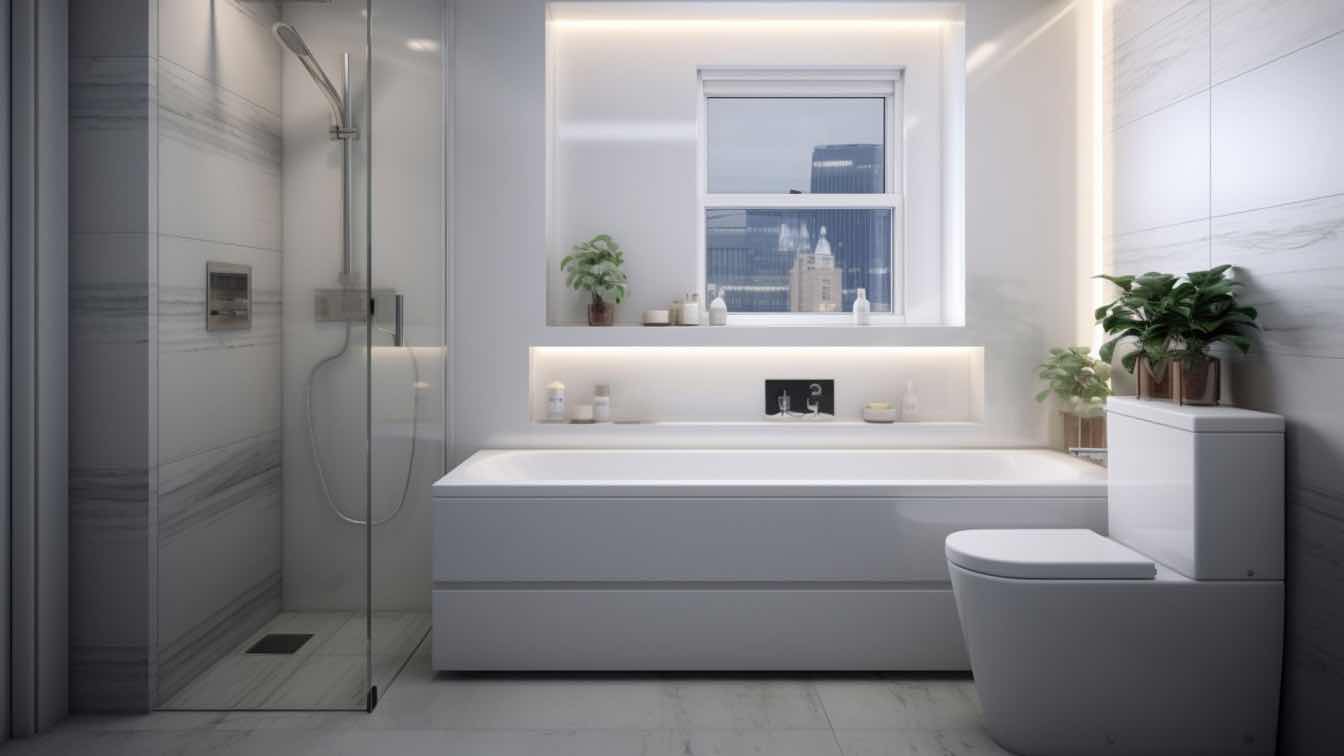Have you ever wondered how 3D printing could get even more efficient? The Bambu Lab Automatic Material System (AMS) is revolutionizing the way we think about material management in 3D printing. In this article, I'll take you on a deep jump into the ins and outs of this cutting-edge system.
We'll explore how the AMS automates material changes, reduces waste, and boosts productivity. Whether you're a 3D printing enthusiast or a professional looking to streamline your workflow, you'll find valuable insights and practical tips. Let's uncover how this innovative technology can transform your 3D printing experience.
Overview of Bambu Lab's Automatic Material System (AMS)
Bambu Lab's Automatic Material System (AMS) streamlines multi-color and multi-material 3D printing. This system automates filament switching, boosts efficiency, and lessens waste.
What is AMS?
AMS encompasses three main components:
Spool Holders: Each of the four spool holders features a motor to control filament feeding and retraction.
Hub: The hub consolidates the four filament paths into one, using a brushless motor to add driving force.
Buffer: Positioned near the tool head extruder, the buffer maintains consistent filament tension for smooth extrusion.
Efficient Material Management: AMS automates filament changes, which cuts down on manual intervention and reduces print times.
Minimized Waste: Precise control over filament feeding means less wasted material.
Seamless Transitions: The system's buffer and motors ensure smooth transitions between filaments.
When I first used AMS for a complex print, I was amazed by the seamless filament changes. It significantly enhanced my workflow and print quality.
Bambu Lab's AMS 3D Printing
The AMS 3D printing setup provides a remarkable way to automate and refine the 3D printing experience. When I first started with Bambu Lab's Automated Material System (AMS), I was impressed with its efficiency. The four filament slots actively push or rewind the filament, reducing manual effort significantly.
Key Components
Filament Slots: Each of the four filament slots comes with a dedicated motor. This setup helps align the filament correctly and improves print precision.
Filament Hub: Located at the bottom of the system, the hub merges the four paths into one. A brushless motor drives the extruder, giving a seamless material flow.
Filament Buffer: The filament buffer at the back maintains optimal tension. This component effectively prevents malfunctions during prints.
Filament Management: The AMS controls the filament's position, speed, and tension. This active control creates a high stabile extrusion process, crucial for multi-color 3D printing projects.
From automatic filament changes to accurate tension control, this system brought my 3D printing process to a new level of reliability. The AMS setup isn't just a feature; it's a game-changer for anyone serious about quality 3D prints.
AMS Functionality
The AMS 3D printing system from Bambu Lab uses advanced technology to manage filament efficiently. A 32-bit MCU, sensor arrays, actuators, and a smart algorithm power it. This setup helps with seamless filament loading and unloading.
Material Management
The AMS easily handles various materials, including PLA, ABS, ASA, PETG, and PC. RFID tags in Bambu Lab filaments sync automatically with the Bambu Studio slicer. Manual configuration is possible with non-Bambu Lab filaments in Bambu Studio or directly on the printer.
Automatic Material Switching
The AMS performs automatic material switching. If configured, when a spool runs out, the system seamlessly transitions to a new one, reducing interruptions and maintaining workflow continuity.
Multi-Material Capabilities
This feature enables users to print with multiple materials in one project. Different materials can be pre-loaded, and the AMS 3D printing system can switch between them without manual intervention.
Load and Unload Process
Loading and unloading filament with AMS is straightforward. This efficiency saves time and minimizes mistakes.
Step-by-Step Filament Loading
Loading filament involves placing it into designated slots with dedicated motors. The AMS then guides the filament to the extruder, optimizing the process.
Filament Unloading and Storage
Unloading filament is equally simple. The AMS retracts the filament and stores it in the filament hub, which helps preserve filament quality.
Real-time Monitoring
AMS 3D printing system enables real-time monitoring, improving print reliability.
AMS Hub Connection and Multi-AMS Setups
Connecting to the AMS hub provides centralized filament control. Users can set up multiple AMS units for larger projects.
Filament Tracking and Error Detection
Real-time filament tracking detects errors quickly. The system alerts users of issues like jams or empty spools, ensuring smooth operation.
Using the AMS 3D printing system from Bambu Lab has revolutionized my 3D printing projects. I no longer waste time manually switching filaments or dealing with mid-print mistakes. This system enhances both productivity and print quality.
Integration with Bambu Lab Printers
The AMS (Automated Material System) integrates smoothly with Bambu Lab printers, enhancing the efficiency of multi-color and multi-material printing. This system is compatible with both the X1 and P1 series printers, leveraging the advanced kinematics and motion control technology inherited from the X1 series.
Compatibility with Bambu Lab X1 and P1
The AMS supports both the X1 and P1 series printers. The integration process involves using specialized cables and connectors to ensure a seamless connection. Users have reported a smooth transition when connecting their X1 printer with AMS, with multi-color prints functioning without issues.
Installation and Setup
Setting up the AMS involves a few straightforward steps, as detailed in the Bambu Lab Wiki. The process begins with connecting the AMS unit to the printer, following the provided manuals for guidance. This setup, including all cable connections and initial configurations, typically takes about 30 minutes.
Quick Start Guide
1. Unbox your AMS unit and all accompanying accessories.
2. Connect the AMS hub to your Bambu Lab printer using the included cables.
3. Install the AMS software from the Bambu Lab support site.
4. Follow the on-screen instructions to complete the calibration.
Connecting AMS Hub and Setting Up Multi-AMS
If you have multiple AMS units, setting up the hub is crucial. Connect each AMS to the hub with the included connectors. In your printer settings, add each AMS unit one at a time. During my setup, adding three AMS units dramatically increased my material options, especially for complex projects needing various filaments.
By following these steps and tips, anyone can optimize their 3D printing setup using Bambu Lab's AMS. This system turns a regular desktop printer into a multi-functional 3D printing powerhouse.
Use Cases and Applications
Enhanced Multi-Material Printing
The AMS (Automated Material System) developed by Bambu Lab supports multi-material and multi-color 3D printing but is limited to a maximum of four colors and materials for the A1 series printers when using AMS lite. This system allows for complex prints using various materials such as PLA, ABS, ASA, PETG, and PC, providing versatility for different printing projects. When creating a multi-material model, AMS facilitates seamless management of materials by automatically mapping filaments based on color and material type, minimizing the need for manual intervention.
Optimizing Workflow in Professional Settings
The AMS automates filament loading and unloading, significantly reducing manual intervention and downtime. It features automatic filament runout detection, which switches to a new spool seamlessly, ensuring the printing process remains uninterrupted. Additionally, the AMS includes features such as filament tangle prevention and automatic spool changing, which help minimize print failures and waste. These capabilities can lead to a noticeable increase in productivity, as experienced in professional settings like design studios.
Reducing Downtime and Manual Intervention
The AMS's filament runout detection ensures smooth transitions between spools, preventing interruptions. It also includes mechanisms to prevent filament tangles and manage humidity, which drastically reduce print failures. In large projects, this technology can save hours by avoiding filament change interruptions and addressing environmental factors that may affect print quality.
Troubleshooting and Maintenance
I've found that keeping the Bambu Lab Automatic Material System (AMS) running smoothly requires understanding common issues and performing regular maintenance.
Common Issues and Fixes
Failed to Pull Back Filament: This usually happens during multi-color prints or after completion. To fix it, release the PTFE tube and wiggle it back and forth, loosening any stuck filament.
Red Blinking Lights: A red spool light often signals a broken filament inside the AMS. Release the PTFE tube, open the AMS, and remove the broken filament.
Filament Not Feeding into Extruder: Check for crimped or degraded Bowden tubes. They block the filament from entering the extruder. Replace any compromised tubes.
Clean PTFE Tubes: To prevent filament jams, regularly inspect and clean the PTFE tubes using a soft, dry cloth.
Check Bowden Tubes: Examine Bowden tubes for wear and tear. Replace them if you see any signs of crimping or degradation.
Lubricate Moving Parts: Apply a small amount of lubricant to the AMS moving parts to keep them operating smoothly. Be careful not to over-lubricate.
Regular maintenance keeps the AMS performing at its best. I noticed that a bit of routine care prevents many issues down the road. So, small steps can lead to big improvements in your 3D printing experience.
Conclusion
In conclusion, the Bambu Lab Automatic Material System (AMS) is a game-changer for 3D printing enthusiasts and professionals alike. Automating material management drastically reduces manual interventions, minimizes waste, and enhances overall productivity. Whether tackling complex, multi-material projects or simply looking to streamline your workflow, the AMS offers a seamless and efficient solution that can elevate your 3D printing experience to new heights. Embrace this cutting-edge technology, and watch your prints come to life with unparalleled precision and ease!





